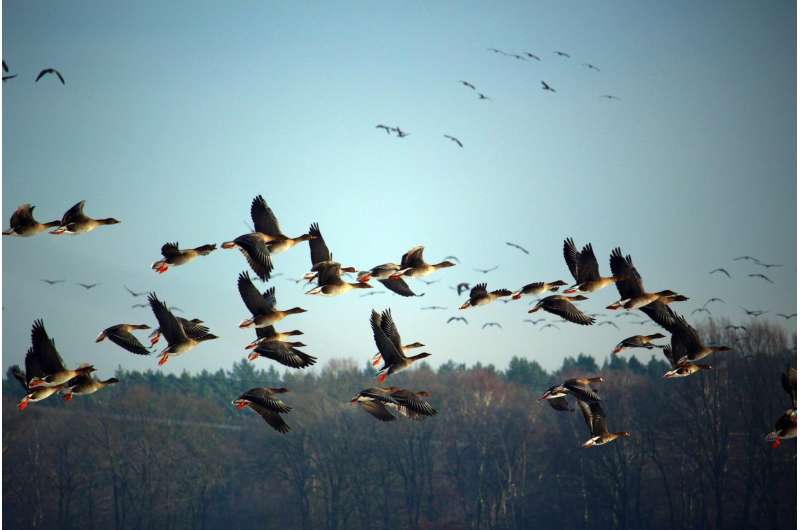Environmental heterogeneity maintains personality in wild birds

A new study shows that spatial and temporal environmental fluctuations can account for the maintenance of personality types in bird populations.
Like humans, many animal species show behavioral differences that characterize different personality types. For example, in populations of great tits (Parus major), one can distinguish individuals that are inquisitive and readily explore new environments from others that are less adventurous. Moreover, these behavioral differences are heritable. How such differences are maintained in populations, rather than eroded bey natural selection over the course of evolution, is one of the key questions in behavioral ecology.
"In recent years, behavioral ecologists have developed models that explain how this can be achieved by means of natural selection. But up to now, very few empirical studies have addressed the issue directly," says Niels Dingemanse, a professor at Ludwig-Maximilians-Universitaet (LMU) in Munich specialized in animal personality and behavioral ecology. In a collaborative international effort, Alexia Mouchet, a Ph.D.-candidate at the Dingemanse lab, and colleagues, have shown that different personality types are favored by selection in different regions of Western-Europe. They also found that some types are favored in some and other types in other years. This implies that spatial and temporal variations in environmental parameters promote the maintenance of behavioral variation.
In the multi-year project, the team assessed personality, survivorship, and reproduction of over 3500 birds, breeding in many nest box plots scattered throughout Western Europe. They found that certain types did best in certain countries, and other types, in other countries. The researchers attributed this primarily to environmental factors. For example, in areas with many predators, timid birds would be expected to have a better chance of surviving than more daring individuals.
In addition, selective forces varied over time, such that the favored personality type varied from year to year. Here, according to the study's authors, ecological factors are likely to come into play. Variation in the availability of beechmast from year to year could be a key factor, as the timing of fruiting in beech woods tends to be synchronized across Western Europe.
Overall, the spatial and temporal variation in the intensity of selection for particular personality types contributes to the maintenance of behavioral differences within the species," says Dingemanse. The effects of major geographical differences in selection point to a mechanism that promotes the development of variants that are adapted to the local conditions. In the longer term, this could result in divergent developmental trajectories, and lead to personality types adapted to the local conditions. The year-to-year fluctuations, on the other hand, will tend to counteract the emergence of local adaptation, thus ensuring that spatial selection does not lead to the loss of the variation that has given rise to the different personality types.
"The project demonstrates the importance of long-term studies in diverse habitats for the understanding of the biological processes that are responsible for the maintenance of behavioral variation in animal populations," Dingemanse says.
More information: Alexia Mouchet el al., "Heterogeneous selection on exploration behavior within and among West European populations of a passerine bird," PNAS (2021). www.pnas.org/cgi/doi/10.1073/pnas.2024994118
Journal information: Proceedings of the National Academy of Sciences
Provided by Ludwig Maximilian University of Munich




















